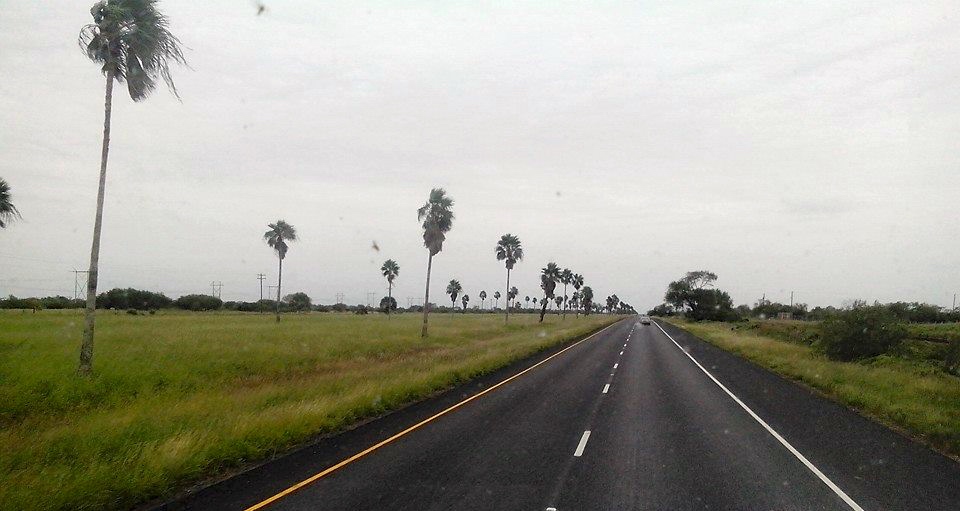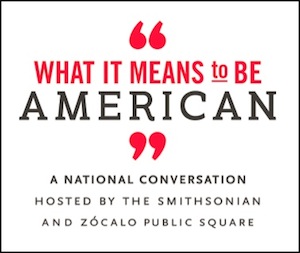
As soon as I spot the rows of palm trees lining Highway 77, I know I’ve arrived home. That’s the point where I roll down my windows to feel the humid and hot winds of the Lower Rio Grande Valley. When I did just that on a recent trip from College Station, where I live now, my 9-year-old son asked loudly from the back seat, “Papi, why does it smell like steak?” My response was swift: “Because Friday night lights, mijo.”
 Where I grew up, we barbecue on beautiful fall Friday nights. We watch football, we dance, and without question we get dressed to the nines in shiny boots, tight jeans, and colorful shirts. You don’t have to be from here to appreciate the sights and smells of Friday nights in South Texas.
Where I grew up, we barbecue on beautiful fall Friday nights. We watch football, we dance, and without question we get dressed to the nines in shiny boots, tight jeans, and colorful shirts. You don’t have to be from here to appreciate the sights and smells of Friday nights in South Texas.
But you do have to move beyond the anti-immigrant and anti-Mexican narratives that drive many outsiders to fear my homeland. The dominant narrative about the U.S.-Mexico borderlands goes something like this: It is drug-infested, violent, and possibly overrun by terrorists and “illegal” immigrants here to take American jobs. Such is the rhetoric of talking heads eager to cast the region as quintessentially un-American and in need of a massive wall to be “secured.”
My desire to challenge these misconceptions and tell a more accurate story is why I became a historian of the Latino experience in the U.S. in the first place. I fell in love with the study of history because it helped me situate my story—and others like mine—into the larger flow of American history. History also gave me a view of the borderlands—with its regional variations, foods, corridos, and Spanglish—that help project a vision of what the future might hold in store. Rooted in interethnic conflict, class polarization, cross-border family bonds, and visions of new and emerging identities, the borderlands have defied easy definition ever since that arbitrary zigzag of a line was established in 1848. What is clear is that the making of the borderlands raised important questions about race, westward expansion, and slavery that helped trigger our country’s Civil War. Since then, the culture and commerce of the U.S.-Mexico borderlands have tested our nation’s democratic principles, especially around citizenship and belonging. The place is still a contested and creative zone where a new vision of America is being born.
What do I mean? Well, let me tell you my story. I grew up with five sisters and one brother in a home full of Bibles, the music of the Bee Gees, arroz con pollo y frijoles, and tortillas de harina (rice with chicken and beans, and flour tortillas). I was born and raised in Brownsville, right on the southernmost tip of Texas. Our house was about a 15-minute walk to el puente, the bridge you can walk or drive across into the Mexican border town of Matamoros. When I was a teenager, my friends and I went to Matamoros for dance clubs that sold you alcohol, no questions asked, and for the taquerias with those fabulously addictive taquitos norteños—small tortillas filled with steak, onion, and cilantro, topped with queso cotija.
If Friday nights were about football, then Saturday nights were about drinking and dancing to Green Day, Kumbia Kings, and Maná. Don’t ask me how we crossed back into the U.S., how it could be that U.S. Customs officials asked a bunch of drunk teenagers: “Are you American citizens?” only to pass us on through into the streets of Brownsville. Era todo un desmadre. (In English: It was pure chaos.)
But this was the 1990s, before the drug violence on the other side, del otro lado, made such festive cross-border forays less routine. Back then, crossing the border to party was just something we did on Saturday night. Sunday mornings, of course, meant going to church. With a slight headache and bloodshot eyes, I spent one hour in Sunday school, followed by another hour and a half of singing, prayers, and preaching. Once it ended, we all quickly made our way home to watch God’s team, the Dallas Cowboys.
Now, while most of my friends went to one of the many Catholic churches in Brownsville, I went to the only Mennonite church in town—the church my parents started in 1971. They were introduced to the Mennonite church in the 1960s when they circled the migrant stream across the Midwest from Michigan to Ohio picking cherries, tomatoes, and sugar beets. It was hard, backbreaking work, which is one of the reasons why faith mattered so much to my parents and to the many families they met on the road and in the fields.
Joining the Mennonite church was without question an odd move for my parents since Mennonites are an ethno-religious group with strong Swiss German or Eastern European roots. Neither the peace theology nor the church’s cautious relationship with government and society appealed to my parents. But Mennonites were the only Protestant group to hold Spanish-language Bible studies for migrant workers in northwestern Ohio. That alone was enough to win my mother’s heart.
My parents’ church, Iglesia Menonita del Cordero, looked nothing like a traditional Mennonite church. We were a Mexican-American and working-class congregation that felt just as comfortable practicing Pentecostal revivalism as we did singing traditional hymns accompanied by an electric guitar and a drum set. Our church had more in common with the Evangelical threads of mainline Protestantism and Pentecostalism that have served as sanctuaries of support for more than a century for Latinos from Houston to Los Angeles. But we did mirror white Mennonite churches in our strong belief in community service. For that, the church built a gymnasium with concrete walls and asphalt tile for barrio youth to play basketball four nights a week. And boy did we play.
In the late 1980s and early 1990s, when refugees from Central America were making their way to the U.S. to escape war and violence in their home countries, our church gym turned into a refugee sanctuary for 50 to 100 people at a time. Regardless, we kept playing. For a few hours every night, Mexican-Americans and Central Americans played basketball, all part of the same hemispheric barrio: trash talk, high-fives, and guys playing in jeans rolled up at the bottom. We taught them Spanglish, and they taught us words in Spanish none of us had ever heard. While I can hardly remember any of the sermons that my father preached, I will never forget those basketball games and the conversations that I had with people whose lives were caught in a political struggle to survive.
The Lower Rio Grande Valley is by no means perfect. We have our share of problems, no question. But one of the things that I love about the people of South Texas is our resolve to not take things lying down, “de no ser dejado[s]” as the folklorist and Brownsville native Américo Paredes so eloquently put it. I love our penchant for living in the moment, for laughing loud and hard at injustice, and for not being afraid of crossing borders and inhabiting multiple spaces. As a Mexican-American and a Mennonite, I feel equally at home in South Texas and in the American Midwest.
We could use a little more of a “border crossing” mentality throughout our society these days. We’re in a moment when our country is changing, when all of us are walking into a new global reality, and it can feel like rabid anti-Latino sentiment is everywhere (from “Where’s your green card?” taunts aimed at Kansas State basketball player Angel Rodriguez to the protestors in Murrieta, California, who gathered to shout “go back home” to a bus full of Central American families).
I think my barrio—the Lower Rio Grande Valley—can teach us a few things. Even as the region inspires cultural exchange, it also demands that its inhabitants respect the struggles, pitfalls, and missteps that come with being part of a vibrant and diverse community. The borderlands force us to reconsider the meaning of community by reminding us that diverse communities thrive in the spaces between solidarity and estrangement. But most importantly, the borderlands demonstrate how that quintessentially American quality—optimism—comes not from naïveté, but from struggle, and from knowing our own stories. Living in a diverse and complex world demands that we all be comfortable with who we are, and thus better positioned to cross the economic, racial, religious, and gendered borders of our own lives.




Send A Letter To the Editors